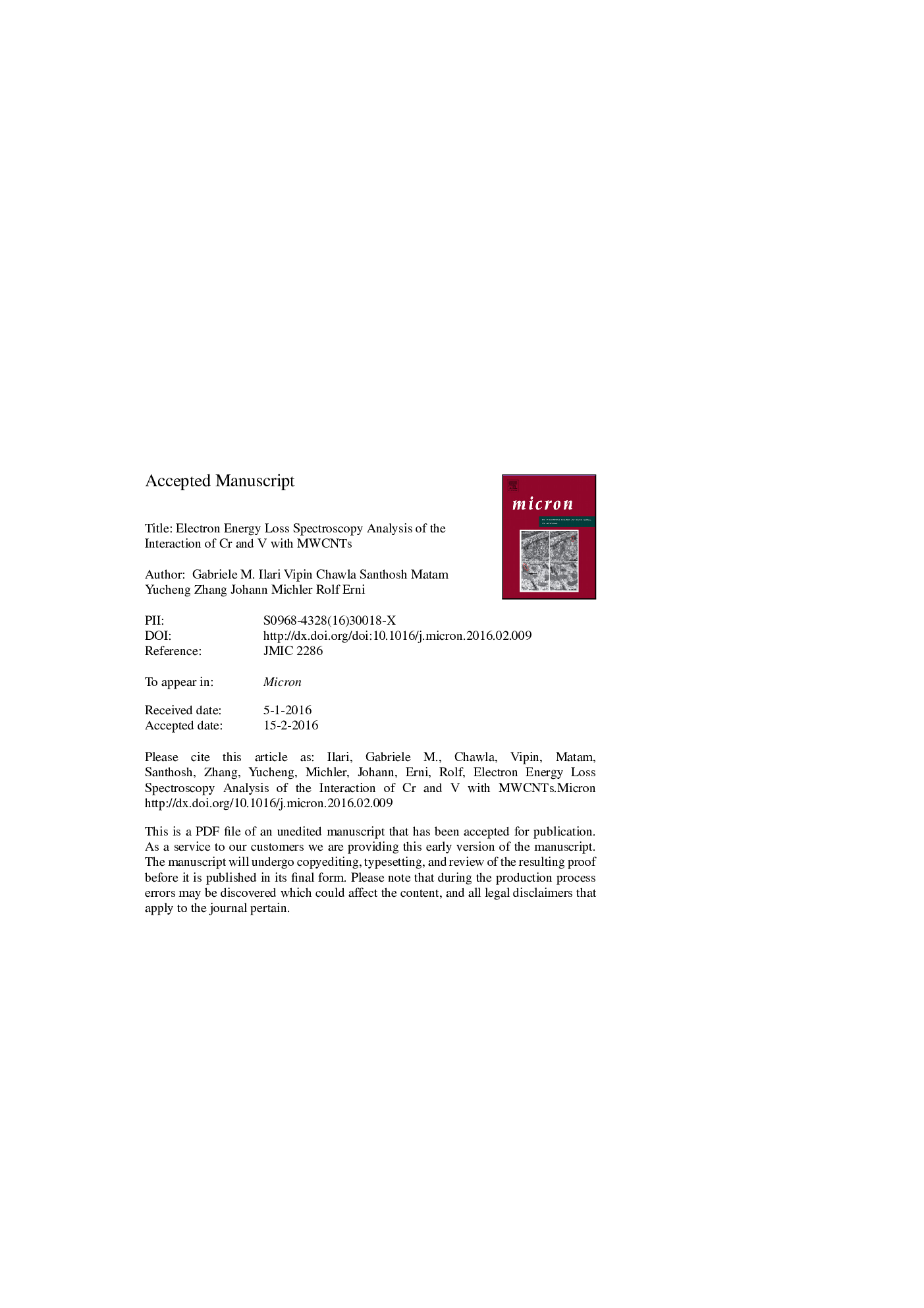| Article ID | Journal | Published Year | Pages | File Type |
|---|---|---|---|---|
| 7986434 | Micron | 2016 | 18 Pages |
Abstract
The presented scanning transmission electron microscopy (STEM) and electron energy-loss spectroscopy (EELS) results show the strong reaction of Cr and V with the graphitic walls of MWCNTs. For Vanadium, an interfacial VC layer could be observed at the interface between VN and MWCNTs, when the samples were heated in situ to 750 °C. Knowledge about this interfacial VC layer is important for the formation of VN-MWCNT hybrid materials, used in supercapacitor electrodes, often synthesized at high temperatures. Chromium reacts at 500 °C with the MWCNTs to form Cr3C2 and in some cases, dissolved the MWCNT completely. Together with the previously published results about the interaction of MWCNTs with Cu (no interaction) and Ni (a slight rehybridisation trend for the outermost MWCNT-wall observed with EELS) (Ilari et al., 2015) the influence of the valence d-orbital occupancy of 3d transition metals on the interaction strength with CNTs is shown experimentally. For a transition metal to form chemical bonds towards CNT-walls, unoccupied states in its valence d-orbitals are needed. While Ni (2 unoccupied states) interacts only slightly, Cr (5 unoccupied states) and V (7 unoccupied states) react much stronger and can dissolve the MWCNTs, at least partially.
Keywords
Related Topics
Physical Sciences and Engineering
Materials Science
Materials Science (General)
Authors
Gabriele M. Ilari, Vipin Chawla, Santhosh Matam, Yucheng Zhang, Johann Michler, Rolf Erni,
